Systemic Anti-Cancer Therapy Regimen Library
HSCT Autologous conditioning - melphalan 140
Treatment Overview
This regimen contains a medicine where one or more biosimilars may exist. Any biosimilars used have been reviewed by the regulator (Medsafe) and relevant specialists were consulted nationally. Where regulators, in consultation with relevant specialists, have agreed that there are no clinically significant differences in either safety or effectiveness between a biosimilar and originator product, these drugs may be used interchangeably.
Cycle 1 - 60 days
Hydration in addition to that specified is recommended as per institutional practice and may need an individualised approach.
melphalan:
- Consider oral cryotherapy on Day -1 by giving patient ice to suck starting 15 minutes prior to, during and up to one hour after the melphalan infusion.
- The total time from preparation to the completion of the infusion should not exceed 90 minutes.
filgrastim: Give filgrastim 5 microgram/kg subcutaneously ONCE daily from Day 5 until engraftment.
Cycle details
Cycle 1 - 60 days
| Medication / Procedure | Dose | Route | Days | Max Duration |
|---|---|---|---|---|
| sodium chloride | 0.9 % | intravenous | -1 | 120 minutes |
| melphalan | 140 mg/m² | intravenous | -1 | 20 minutes |
| sodium chloride | 0.9 % | intravenous | -1 | 120 minutes |
| paracetamol * | 1000 mg flat dosing | oral administration | 0 | |
| proMETHazine * | 12.5 mg | intravenous | 0 | 1 minutes |
| Autologous stem cell transplant | intravenous | 0 | ||
| filgrastim | 5 microgram/kg Once daily | subcutaneous injection | 5 |
Hydration in addition to that specified is recommended as per institutional practice and may need an individualised approach.
melphalan:
- Consider oral cryotherapy on Day -1 by giving patient ice to suck starting 15 minutes prior to, during and up to one hour after the melphalan infusion.
- The total time from preparation to the completion of the infusion should not exceed 90 minutes.
filgrastim: Give filgrastim 5 microgram/kg subcutaneously ONCE daily from Day 5 until engraftment.
Full details
Cycle 1 - 60 days
Day: -1
| Medication | Dose | Route | Max duration | Details |
|---|---|---|---|---|
| sodium chloride | 0.9 % | intravenous | 120 minutes |
Quantity:1000 mL
Instructions:
Prior to melphalan infusion. |
| melphalan | 140 mg/m² | intravenous | 20 minutes |
Instructions:
Additional details:
|
| sodium chloride | 0.9 % | intravenous | 120 minutes |
Quantity:1000 mL
Instructions:
After melphalan infusion. |
Day: 0
| Medication / Procedure | Dose | Route | Max duration | Details |
|---|---|---|---|---|
| paracetamol * | 1000 mg flat dosing | oral administration |
Instructions:
ONE hour prior to return of autologous stem cells, or as per institutional practice. |
|
| proMETHazine * | 12.5 mg | intravenous | 1 minutes |
Instructions:
ONE hour prior to return of autologous stem cells, or as per institutional practice. |
| Autologous stem cell transplant | intravenous |
Instructions:
Administer as per institutional practice, at least 24 hours after melphalan infusion completed. |
Day: 5
| Medication | Dose | Route | Max duration | Details |
|---|---|---|---|---|
| filgrastim | 5 microgram/kg Once daily | subcutaneous injection |
Instructions:
Give ONCE daily from Day 5 until engraftment.
|
Additional details
Section 1: Dosing for bodyweight
Supportive Care Factors
| Factor | Value |
|---|---|
| Antifungal prophylaxis: | Routine antifungal prophylaxis recommended |
| Antiviral prophylaxis for hepatitis B virus: | Required for anti–HBc positive patients at risk of reactivation |
| Antiviral prophylaxis for herpes virus: | Routine antiviral prophylaxis recommended |
| Emetogenicity: | High |
| Gastroprotection: | Gastroprotection may be considered |
| Growth factor support: | Recommended for primary prophylaxis |
| Hydration: | Routine hydration recommended |
| Hypersensitivity / Infusion related reaction risk: | High - routine premedication recommended |
| Irradiated blood components: | Irradiation of blood components is recommended |
| Pneumocystis jirovecii pneumonia (PJP) prophylaxis: | Routine antibiotic prophylaxis recommended |
| Tumour lysis syndrome prophylaxis: | Tumour lysis syndrome prophylaxis may be considered |
References
New Zealand Blood Service Transfusion Medicine Handbook Third Edition, 2016 https://www.nzblood.co.nz/assets/Transfusion-Medicine/PDFs/111G122.pdf (accessed 16 June 2022).
* The medicines, doses, combinations, and schedule in this treatment regimen have been carefully reviewed against international best practice guidelines by specialists in medical oncology around New Zealand and this advice has been accepted for publication by Te Aho o Te Kahu (the Cancer Control Agency). Sometimes medicines that are used in routine clinical practice have not been through a formal review process by the NZ Medicines Regulator Medsafe and are therefore considered unapproved or off-label. These medicines are legally able to be prescribed through sections 25 and 29 of the Medicines Act and by obtaining informed consent from patients. All treatment regimens listed on this website have been through robust peer review and are considered an accepted standard of care, whether prescribed through sections 25 or 29 or carrying formal Medsafe Approval.
s29: This symbol indicates that some formulations of the associated medicine are legally only able to be prescribed under section 29 of the Medicines Act. You can see which formulations are section 29 by hovering over the s29 symbol. You can access full medication details from the New Zealand Formulary by clicking on the medication name. Each clinician retains full responsibility for ensuring they have complied with all relevant obligations and requirements of section 29 including obtaining informed patient consent prior to prescribing the applicable medicine.






